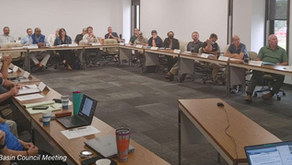Why Understanding Organizational Capacity Leads to Asset Management Success
- JD Solomon

- Jun 20, 2023
- 4 min read

Most organizations fail to get their asset management programs off the ground or struggle to make them sustainable. Success using cookie-cutter implementation tasks and approaches is elusive. And this is true even within the same industry or at different locations within the same organization. The "something" that is missing for asset management success is organizational capacity.
Asset Management
Asset management can be simply stated as the risk-based approach to get the most reliability and time from our possessions. Moving to a culture that focuses on formal risk analysis, quantifying performance, and making long-term decisions requires a different type of thinking than many organizations have historically utilized.
Organizational Capacity
Organizational Capacity is an operative definition to capture best the ability to implement and maintain asset management. Organization Capacity has three components.
Organizational Capacity = the Secure Harbor + CID Nexus + Personality/Time
Secure Harbor
A secure harbor is a place where new ideas can be tried, and ingenuity is praised, even if that particular ingenuity was not the walk-off home run you were looking for. Starting a safe harbor from scratch can be painful. For asset management to succeed, the secure harbor should be in place before implementing an asset management program.
For an organization, division, or plant site to continually improve, an atmosphere that encourages and rewards ingenuity, creativity, and outside-the-box problem-solving must exist. However, from a practical perspective, organizations are under pressure to be leaner, more efficient, and more cost-effective. The conflict makes securing the harbor difficult.
Psychological safety is a shared belief held by team members that it is acceptable to take risks, express their ideas and concerns, speak up with questions, and admit mistakes — all without fear of negative consequences. Look for psychological safety in the workplace, and you will likely find a secure harbor that leads to asset management success.
Capability, Information, Decision (CID) Nexus
An often unnoticed or occasionally exclusive, and therefore not properly considered, nexus exists between a site’s workforce capabilities, information systems (decision support structure), and decision-making structure. The triangular relationship is usually not appreciated.
Workforce capabilities are best described by knowledge, skills, and abilities (KSAs). A workforce with low KSAs, especially in complex market sectors, will not be entrusted with a lot of decision making. Their need for information is low. To force information or decisions too low into the organization will paralyze it.
A similar argument can be made for organizations that have decided to hold the most meaningful decisions at a high level. Forcing advanced information systems into the organization wastes everyone's time and the organization's money. It also serves as a source of frustration for a workforce with high KSAs because it reminds them that they are doing more churning than making decisions.
Collecting data in the event that someone may need it someday is a waste of resources. Effective asset management programs seek to balance the CID nexus early and often.
Personality/Time
There is a difference between an organization’s culture (its identity and values) and its climate (the short-term way people experience the workplace). For example, revenue swings or mergers can affect the climate without changing the culture. If the organization is built around a culture of process and efficiency, the solution would likely be to double down on improving processes and efficiencies. That is positive from an organizational perspective, but the workforce may feel resentful or sad when their bonuses are canceled, coworkers are laid off, or they lose benefits or perks.

Rebecca Wojak and I used “personality over time” in our 2017 paper on organizational capacity and asset management to avoid the cliches associated with culture and climate. Plus, we wanted to acknowledge that organizations have cultures and climates, but divisions and plant sites within an organization do too. Personality is how we describe climate at the functional level in the organization.
Mood- short-term challenges, not permanent. Yearly budget challenges, demand spikes for a product, a rare event, etc., cause the organizational mood to change.
Personality – how one operates, weathers the “moods” that may come and go throughout the year(s), the default mode that an organization usually comes back.
Culture - bounds that each plant within an organization lives between, often pervasive across the entire company, should be fairly easy to pick up on
Some events that shape the personality of an organization, division, or plant site are financial challenges, compliance problems, health and safety issues, merger and acquisitions, and reorganization or senior management turnover. These are constantly changing over time. Effective asset management programs incorporate an organization's culture but, more importantly, focus on the personality of each business unit.
Pulling It Together
Most organizations fail to get their asset management programs off the ground or struggle to make them sustainable. Success using cookie-cutter implementation tasks and approaches is elusive. And this is true even within the same industry or at different locations within the same organization. The “something” that is missing for asset management success is organizational capacity.
JD Solomon Inc provides solutions for program development, asset management, and facilitation solutions at the nexus of facilities, infrastructure, and the environment. Contact us for more information related to our environmental and facilitation services. Subscribe for monthly updates related to our firm.
JD Solomon's newest book, Facilitating with FINESSE: A Guide to Successful Business Solutions, is now available on Amazon.










Comments